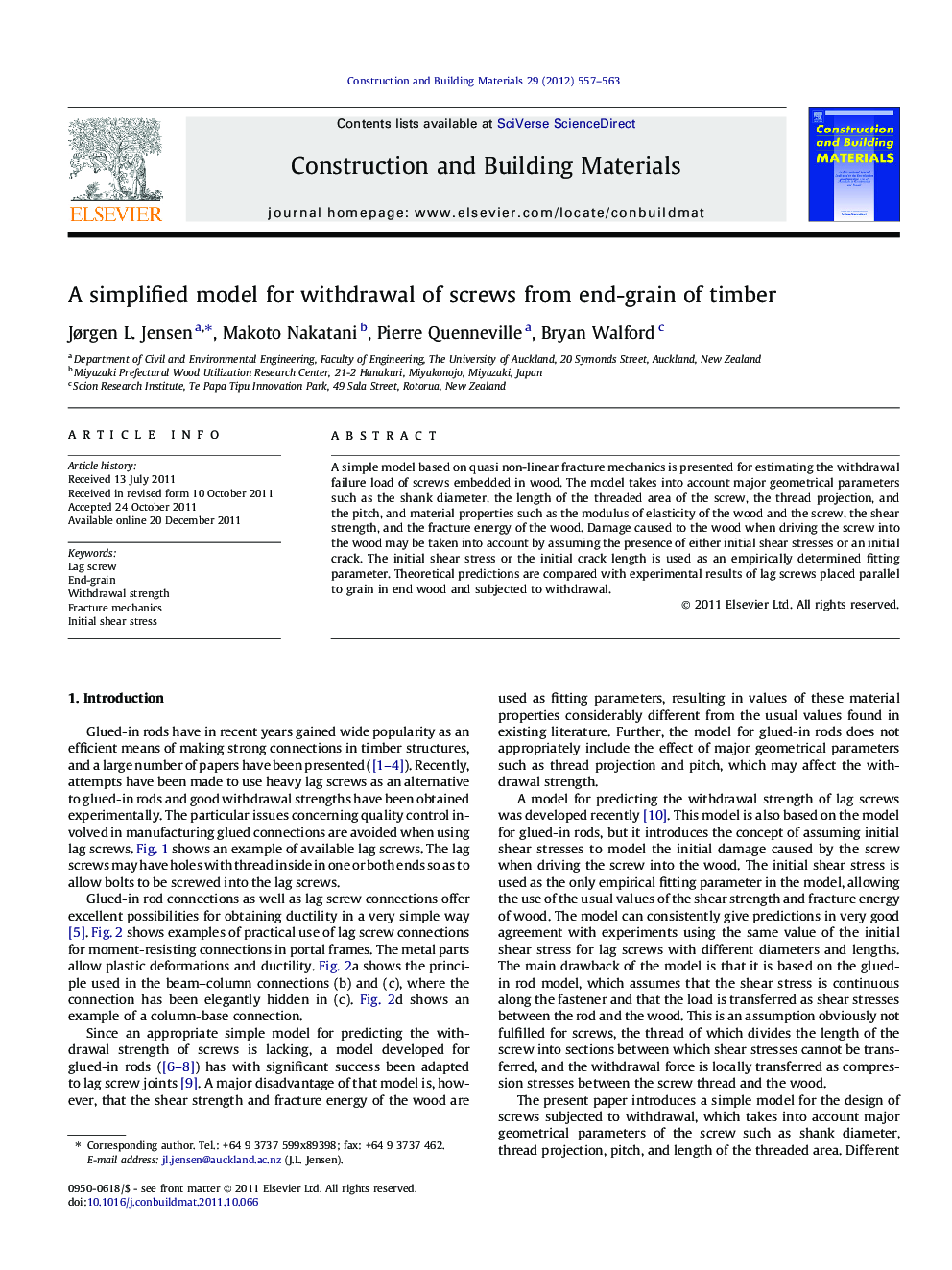| Article ID | Journal | Published Year | Pages | File Type |
|---|---|---|---|---|
| 259105 | Construction and Building Materials | 2012 | 7 Pages |
A simple model based on quasi non-linear fracture mechanics is presented for estimating the withdrawal failure load of screws embedded in wood. The model takes into account major geometrical parameters such as the shank diameter, the length of the threaded area of the screw, the thread projection, and the pitch, and material properties such as the modulus of elasticity of the wood and the screw, the shear strength, and the fracture energy of the wood. Damage caused to the wood when driving the screw into the wood may be taken into account by assuming the presence of either initial shear stresses or an initial crack. The initial shear stress or the initial crack length is used as an empirically determined fitting parameter. Theoretical predictions are compared with experimental results of lag screws placed parallel to grain in end wood and subjected to withdrawal.
▸ A novel type of lag screws for use in end-grain of timber structures is studied. ▸ The lag screws are a competitive alternative to glued-in steel rod connections. ▸ A new simple fracture mechanics model for withdrawal of screws is presented. ▸ Load is transferred from the screw to the wood by means of local compression stresses. ▸ The model is compared with test results.
